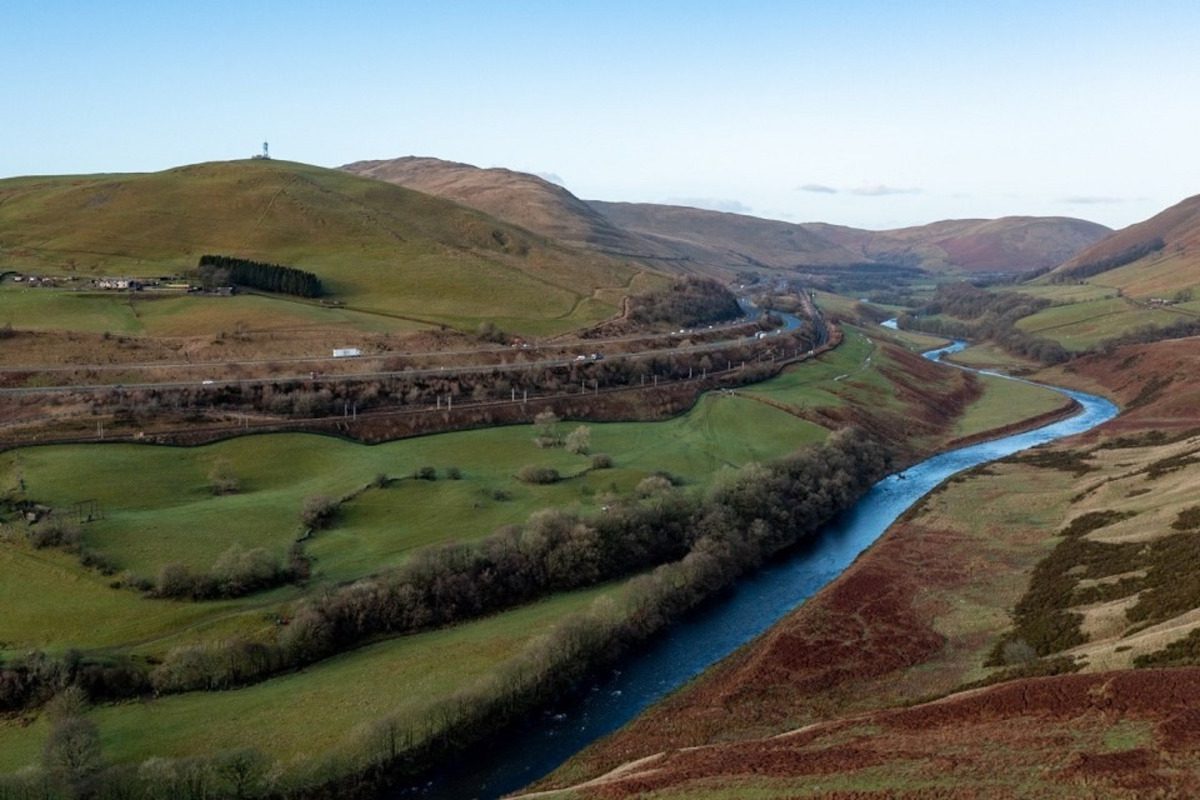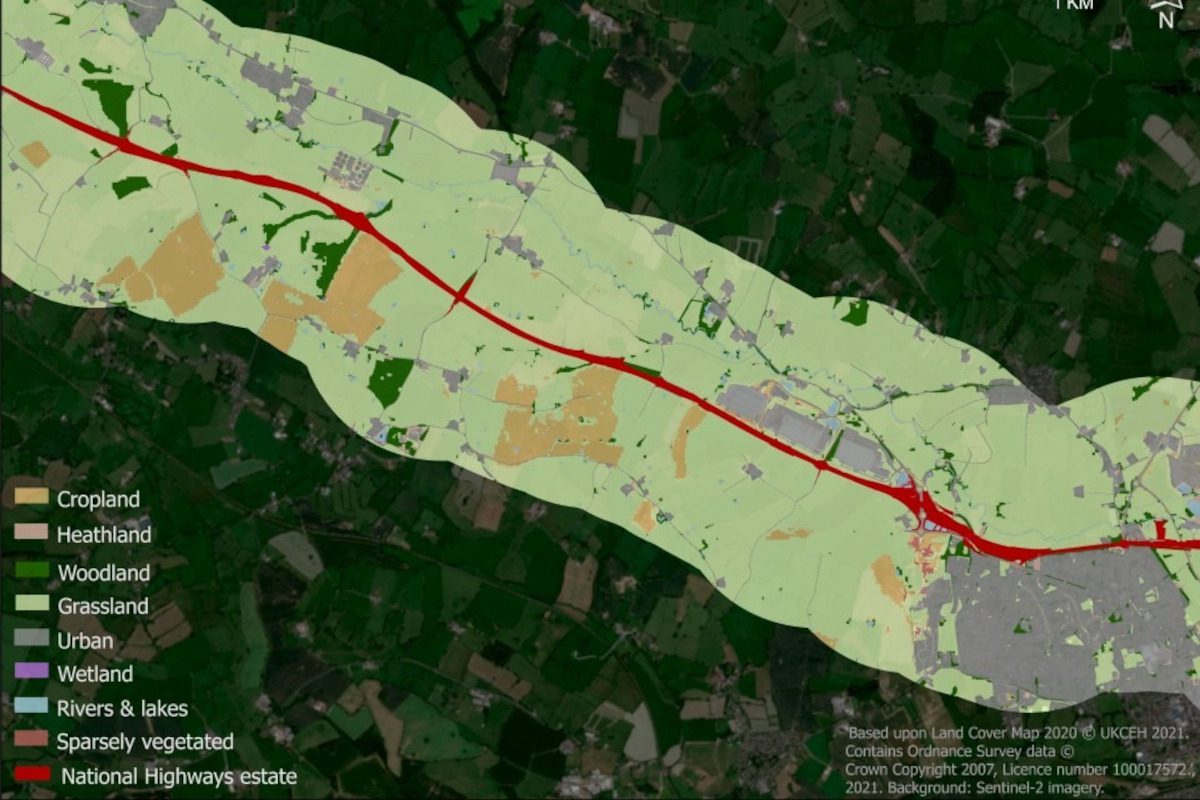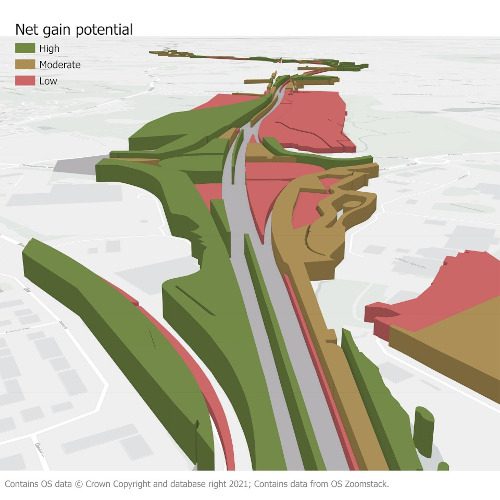
Manchester Metropolitan University has been commissioned to develop a new mapping system which will make it easier for National Highways to keep track of the ecosystems bordering the country’s 4,300 miles of motorways and major A-roads.
The programme will use more than 20 different sets of data to overlap and layer National Highways’ soft estate, roughly 28,258 hectares of green land close to the roads.
While the government-owned company has produced environmental maps of many individual locations – this new approach will map the entirety of England’s strategic road network for the first time.
The land surrounding the road network is often undisturbed by humans and contains a range of protected habitats including species-rich grasslands, woodlands and wetlands; each potentially supporting a number of rare and protected animals and plants including, peregrine falcons, dormice, rare orchids and other wild plants.
It is not possible or practical for National Highways to survey every inch of its soft estate manually; however, this innovative mapping tool will be supported by ground-level assessments of the local habitat and enable it to more precisely targeted biodiversity investment in the future.

Laurence Lewis-Jones, National Highways’ Principal Biodiversity Advisor, said: “We know roads have the potential to compromise the quality of their surrounding environments. For wildlife, roads can fragment important habitats, putting pressure on plant and animal populations.
“This project should help combat these challenges, identifying areas where we can increase biodiversity, putting nature at the heart of our network.”
Dr Chris Field, leader of the research team at Manchester Met, said: “Through remote mapping and the application of the Biodiversity Metric across the whole strategic road network, we can take a holistic view that helps National Highways make strategic investment decisions that optimise gains in biodiversity.”
The Manchester Metropolitan University project will also develop a tool that will enable Natural England’s Biodiversity Metric to be used on the maps and allow a targeted approach to maximising the number of biodiversity units across the network.

In its Biodiversity Delivery Plan, National Highways declares a commitment to maximising biodiversity delivery to achieve no net loss of biodiversity at an organisational level by the end of 2025.
“Since 2020 National Highways has embedded biodiversity in the company’s culture and invested in its goal to achieve no net loss. This investment is being used to improve biodiversity as well as support projects with wider benefits to natural capital, customers and our neighbouring communities.”
For more on National Highways’ biodiversity work, visit https://nationalhighways.co.uk/our-work/environment/biodiversity/






